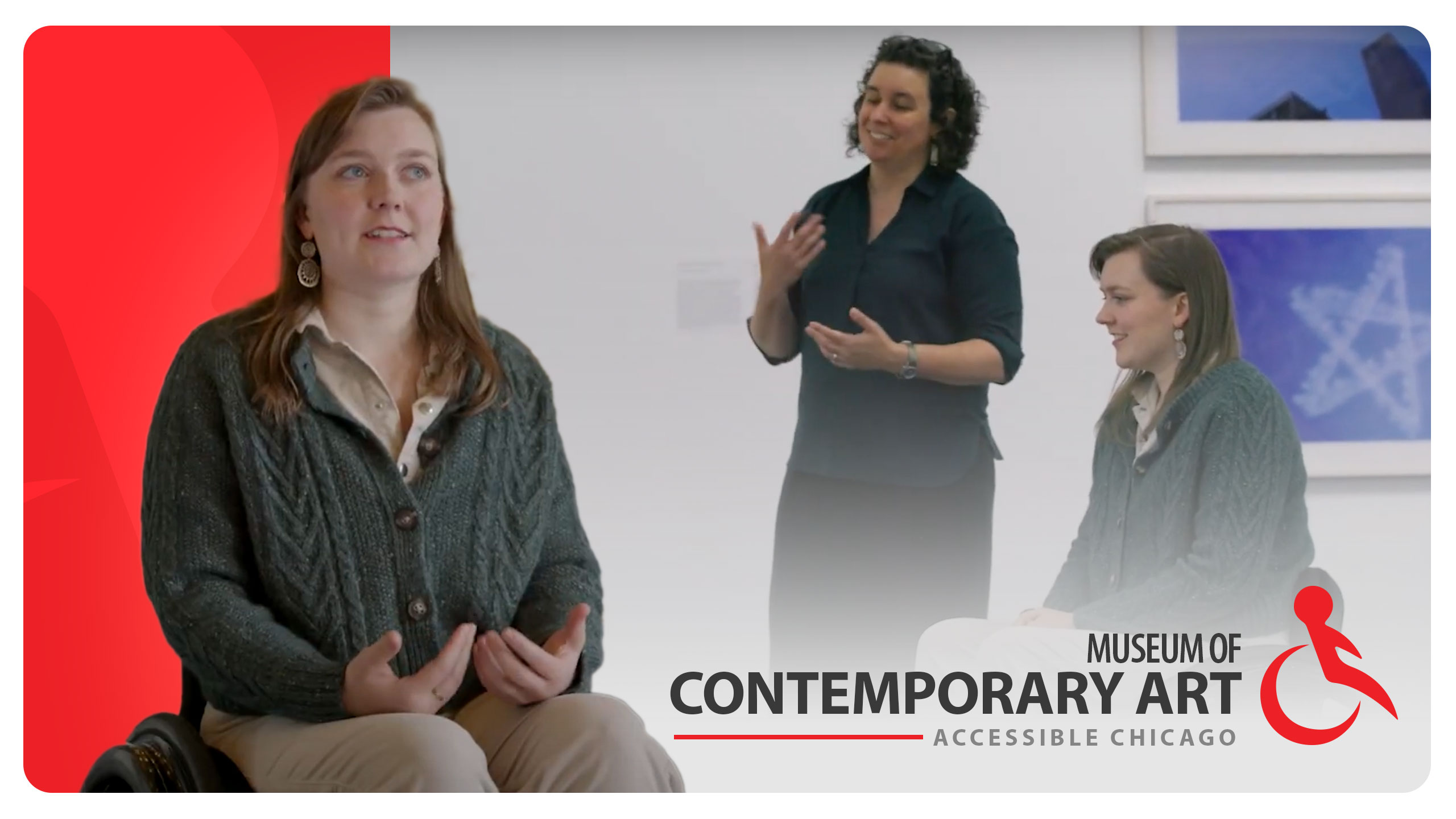
Join Meredith, a wheelchair user, and Jamar Beyonu, Director of Inclusion, Diversity, Equity, and Accessibility at the Museum of Contemporary Art (MCA) in Chicago, as they discuss the importance of accessibility and inclusion in the arts. Meredith shares her experience as a disabled individual visiting the MCA, highlighting the seamless accessibility from the moment she entered the museum. She emphasizes the significance of being able to navigate the space without obstacles and enjoy the exhibits like any other visitor. The museum collaborates with the disabled community to ensure authentic and inclusive practices.
(música brillante)
MEREDITH: Mi nombre es Meredith. Y estamos en el Museo de Arte Contemporáneo, aquí en Chicago. Soy usuaria de silla de ruedas, como pueden ver. He estado discapacitada por unos 10 años. Y por eso, la accesibilidad es importante para mí porque es una cuestión de poder ser incluida o no.
JAMAR BEYONU: Mi nombre es Jamar Beyonu. Soy el Director de Inclusión, Diversidad, Equidad y Accesibilidad en el Museo de Arte Contemporáneo de Chicago. El apoyo a la accesibilidad es muy importante para nosotros. Y queremos apoyar a personas de todos los ámbitos de la vida, incluidas las personas con discapacidades.
MEREDITH: Sentí que el Museo de Arte Contemporáneo de Chicago me acomodó desde el momento en que crucé la puerta. Pude entrar. Y sé que no suena como mucho. Pero muchas veces, eso es la mitad de la batalla. Mi guía, Amy, pudo responder cualquier pregunta que tuve.
JAMAR BEYONU: Estamos muy orgullosos de tener socios discapacitados, que nos dan ideas sobre lo que podemos estar haciendo mejor. No estamos viviendo la experiencia en todos los casos, y tener personas con esa experiencia vivida nos ayuda a ser auténticos en lo que estamos haciendo con la accesibilidad.
MEREDITH: Creo que, como persona discapacitada, muchas veces la gente piensa que la accesibilidad es todo lo que pienso a diario. Y lo es y no lo es. Cuando las cosas no son accesibles, realmente interfiere con mi día. Pero cuando entro en un espacio como este, y puedo moverme fácilmente, y puedo ver todo sin obstáculos, simplemente disfruto del museo como cualquier otra persona, lo cual es genial. Algo con lo que a veces me encuentro en los museos de arte es que las piezas están colgadas a la altura de los ojos de una persona de pie. Pero no tuve ese problema hoy. Cuando pensamos en ir a un museo de arte, pensamos mucho en ver obras de arte. Me gusta cuando las cosas son interactivas. Se siente más accesible, y para, como, la comunidad ciega, otros amigos con discapacidades de diferentes tipos que la mía. Lo hace más accesible para todos.
(música brillante continúa)
MEREDITH: Tenían kits sensoriales disponibles. Dispositivos de asistencia auditiva, cosas de esa naturaleza.
JAMAR BEYONU: Subtítulos de carteles, apoyo en ASL, kits de accesibilidad y adaptaciones específicas para aquellos con diferentes necesidades. Podemos adaptarnos a las necesidades de esa comunidad.
MEREDITH: Y además de esas cosas, también había ascensores. Bonitos, espaciosos. Capaces de llegar a todas las exhibiciones en cada piso.
JAMAR BEYONU: Queremos ser un lugar al que las personas con discapacidades sientan que pueden venir cómodamente.
MEREDITH: Pude ver lo accesible que es. Realmente me inclina más a invitar a mis amigos, familiares y colegas discapacitados.

Recent Comments